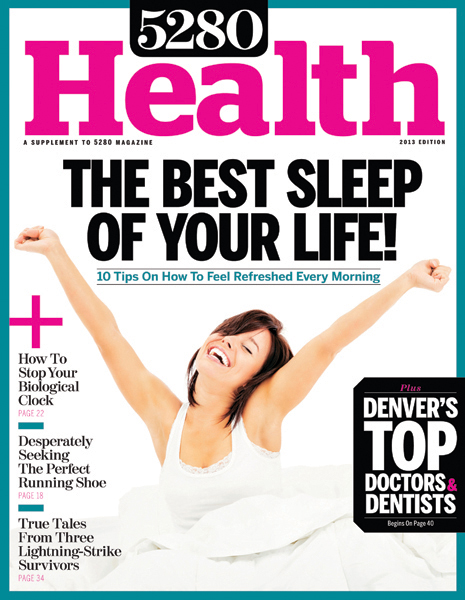The Local newsletter is your free, daily guide to life in Colorado. For locals, by locals.
Cursing every painful step, I tiptoe up the 28 stairs leading to the rooftop patio. I’m walking ballerina-style to avoid the excruciating hamstring pain that comes with lowering my heel to the ground—the latest in a long line of distance-running injuries.
“Maybe you should bike instead,” my husband says. Earlier that afternoon, just after she had diagnosed me with Achilles tendonitis, my podiatrist had suggested I take up a different sport. I glare at my husband, and then brush a tear off my cheek.
I am a runner. It’s what I do. I have started innumerable mornings at 5:30 a.m. with 15-mile runs. I have also learned this hobby of mine means I sometimes sit at work with bags of frozen peas dripping water down my knees. Still…not even a small part of me wanted to give up the sport. As a special education consultant, running gives me unobstructed quiet time to plan my work and process my days.
So I sought a second opinion. Then a third, fourth, and fifth. I finally ditched the doctors for running experts, hoping to find a shoe, a stride—something!—that would allow me to run injury-free.
A local running coach suggested that a reduction in miles, change of gait, and minimalist shoes could alleviate my current pain and prevent future injury. A physical therapist warned against all that “minimalist garbage” out there. A New York Road Runners coach suggested orthotics. After an analysis, a Boulder running lab suggested flat racers and gel inserts.
After weeks of sole (and soul) searching, I decided to form my own opinion. To do so I became the owner of barefoot shoes, squishy gel inserts, hard orthotic inserts, and a pair of flat racers. Fighting the physical battle of running to maintain the mental reward—creative, productive decompression time for myself—was important. I needed to do it. My mind was filled with trepidation, optimism, and strategy. I laced back up.
For one reason or another, I abandoned the gel inserts, the orthotics, and the barefoot shoes within a couple of months. Each had a downside—or a painful side effect—I couldn’t overcome. But as I ticked through each option, I started to worry; I had only one alternative left. The flat running shoes. A mix of typical tennis shoes and a barefoot design, these kicks supported my feet, made my footfalls soft, and allowed me to roll over varied terrain. I could feel the runner in me returning. I was ecstatic. Still, the tiniest twinge of tendon soreness remained. The shoes, I thought, were acceptable; now I needed to address my gait.
For days, I walked trails noting the form, speed, and posture of other runners. On subsequent runs, I straightened my back, lifted my head and chest, and adjusted my footfalls to land mid-foot. My body responded. And after a while I realized that I was back to focusing on work and my students—not on my pain.
Over the next six months, I completed five races, pain-free. At the end of the most recent one, I took stock of my success. I realized I didn’t listen when one person told me to buy a bike (the nerve!); I didn’t get overwhelmed when I had too many opinions to consider; and I didn’t just give up. As a result, I have my health and I have my sport.









